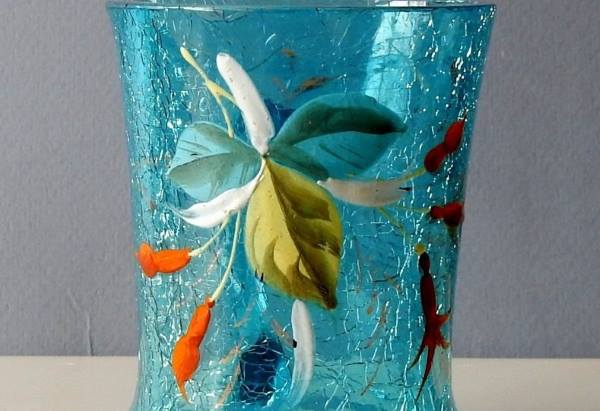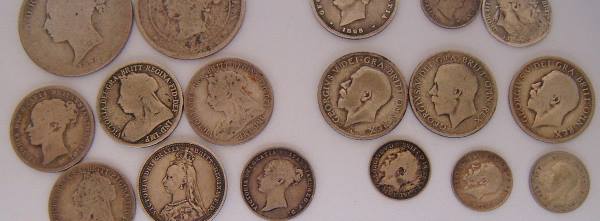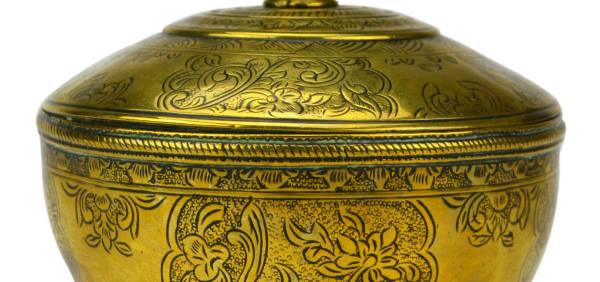Chad Valley and Chiltern are among the best loved of all the vintage teddy bear manufactures. Both companies started making their first soft toys in 1915 when Chiltern made their now famous Master Teddy and Chad Valley produced their first jointed plush teddy bears.
The bears of both companies have become very popular in this era of teddy collecting, although possibly Chiltern’s ‘Hugmee’ range are the most loved by Chiltern enthusiasts, of whom there are many. There are different types of Hugmee however, from the early versions, which, stuffed with woodwool, which were not particularly child-friendly to the later ones, made from mohair with a soft stuffing, making them much more likely to be cuddled by their young owners.
It is important to know the characteristics of any historic bear manufacturers in order to recognise their product if you see them at auction and in this article, I am going to try to describe these.
The very earliest of the Chiltern bears, Master Teddy, has a large round head with small ears and large, bulbous, glass eyes. He is not a pretty bear but most collectors would like to have one in their hug. His nose is stitched verticall above a smiley face which shows a small pink tongue. He has a linen body with a cotton jacket and shirt and wears felt dungarees. This bear, who was available in five sizes, is a very rare find nowadays but there are still some about, so if you keep your eyes open, you might spot one at a toy auction. The most likely place to find one however, is at the Christie’s Teddy Bear Auction, which is held twice yearly, in June and December in London, and of course the vintage bear dealers will occasionally have one for sale. Bear fairs are another good place to look but you never know what might turn up at a toy auction anywhere in the country, so it is worth knowing as much as possible about any teddy, which you might otherwise dismiss out of hand as ‘just an old bear.’
Chiltern introduced their now enormously popular ‘Hugmee’ range in the 1920s. These popular bears were made in blue, white, pink, green and blonde until the 1960s as well as the traditional golden colour, and it is these coloured bears which are eagerly sought after by collectors today. The early bears tended to fade more than the gold and teddies in good condition, with vibrant colours and most important of all, with sweet faces, are rare now and command high prices. Christie’s had a beautiful Chiltern Hugmee in their November auction which cost £705 plus buyer’s commission, so they are not cheap. He was in superb condition with wonderful pink colouring and collectors will pay this sort of money for a rare bear like this.
Characteristics of the pre-war Hugmees include good quality mohair, a long shaved muzzle with elongated upward stitches on the outside edges, clear, or amber and black glass eyes sewn in and tied at the back of the head, large thighs and tapering ankles, known as ‘drumstick legs,’ and a large substantial tummy. The body was stuffed with kapok whilst the head and parts around squeakers and growlers were filled with wood wool. One of the main identifying features of the Chiltern bear, apart from the nose stitching, are the ‘spoon-shaped’ paws made of velvet or cotton, which have four claws. They have pointed feet and the larger bears were given cardboard inserts to help keep their shape, and in the case of the musical Bruin Bear, made in the 1950s and 1960s, to enable him to stand upright.
Due to the shortage of material after the war, the later bears had shorter and thinner arms and legs, flatter faces with a shield-shaped nose and smaller feet with pads made of rexine instead of cotton or velvet. In 1960, a plastic nose was introduced, making the identification of the later bears much easier and the muzzles of the later bruins are unshaven. Labels made of cardboard were used until the 1940s but are very rarely found today. Red printed fabric labels, which were often sewn in the side seam of the bear, were then introduced, and in the 1950s, a blue printed white label was used.
The range and variety of bears produced by Chiltern was enormous. Apart from their Hugmee range, they made the Chiltern Ting-a-ling, which jingled if shaken, the musical Bruin Bear, a charming little bear with a wind-up musical mechanism, who stands up and turns his head from side to side as the music plays; and a very popular and now eagerly sought after ‘bellows movement’ musical bear, which plays a tune as his tummy is pressed. The latter are rare now and very hard to find with the musical movement in good condition so expect to pay a high price. No musical Chiltern in good condition and a good musical movement will be cheap and prices can range from £300 for a wind-up bear, to £600-£700 for a bellows movement teddy. Indeed at one Bear Fair I attended, one of the squeeze-box bears changed hands between dealers three times, eventually coming to rest with someone who was asking £1,000 for it!
The company made an artificial silk musical bear in the 1940s with a wind-up musical movement and a glum expression, which was a later edition of their mohair Silky Bear from 1929 and in the late 1930s, the now rare artificial silk Skater Bear made its appearance. This bear is much sought after and examples may be seen at various teddy bear museums around the country. It is dressed as a skater with a white mohair plush muff and long sleeved blue or pink sweater. Some do have the Chiltern label on the foot but this is even more scarce and these bears can be very expensive indeed.
One of the best known of all the later Chilterns is the Bear on a Trike, designed in 1958 by Pam Howells, who worked for the company for many years. Made of artificial silk plush in a range of colours, he was based on a Disney cartoon character from 1930s. The latter had an unusual white label with blue lettering saying ‘Magna Series,’ Harborne, England.’ A Peacock bear in good condition can make £1,200 to £1,500 but the Magnas are not as expensive.
Chad Valley bears themselves had a small white label with the words ‘Hygienic Toys. Made in England. Chad Valley Co Ltd’ embroidered in red, denoting the fact that these were made in the 1930s. However, the company received the Royal Warrant in 1938, after which a new white label was sewn on the foot with the words in blue text ‘By appointment to H.M. the Queen’ below the royal crest. This was amended to ‘H.M. the Queen Mother’ in 1953, when our present Queen ascended the throne and the difference in the wording makes it easy to know whether the Chad Valley bears are pre or post 1953. They had glass eyes until the late 1950s, which were then replaced by plastic ones. These were sewn in and finished at the back of the neck. In the 1960s, plastic safety eyes with washers were used. Again, if a bear has glass eyes, it will be an earlier bear unless it has had replacement eyes, and although plastic and glass eyes look the same, if you feel the eye with the back of your finger or hold it to your lips, you will immediately be able to tell the difference, as glass feels cold to the touch and plastic is much warmer.
There are many very good books which help in the process of the identification of old bears, two of which are Pauline Cockrill’s Teddy Bear Encyclopoedia, published by Dorling Kindersley, which gives coloured illustrations and a wealth of information about the Chad Valley and Chiltern bears, as well as all the other old bears of yesteryear and the Miller’s Guide to Teddy Bears by Sue Pearson. The paperback by Pauline is excellent and very easy to carry around, and is an invaluable aid at local auctions, when neither you nor the auctioneer are sure of the make the of ‘old bear for sale!’
The early Chad Valley bears have a longer face and are perhaps more realistic and ‘bear like’ than their later bruins but whatever their age, all the Chads are loved by arctophiles.
A wine coloured teddy was made in the 1930s and it is believed that only six of these were produced in the entire decade, making them extremely rare and their value at auction would be incalculable, so keep a look out for one! The company did make a great many coloured bears though, and, like the coloured Chilterns, or for that matter, any other coloured bear, they are extremely collectable and will usually fetch more money than a golden teddy.
In 1953, Chad Valley made Toffee, a character from BBC’s children’s radio programme, Listen with mother, and this little bear, who wears a red cap and scarf, is very popular with collectors today and can fetch between £400 and £500 in good condition. The very good British company Farnell also made a Toffee Bear in 1960, and either would be a desirable addition to any hug.
Chad Valley also obtained the sole rights to make the glove puppet Sooty in the 1950s and these can be found reasonably easily and are not expensive.
During the war, bears were made from any obtainable material, as mohair was impossible to find and during this time, Chad Valley made a really delightful little bear cub of grey blanket type material with the label ‘By appointment to H.M. the Queen’ on him. He is very unusual and I have never seen another like him.
Teddy bear nightdress cases were also popular and in the 1950s, some lovely items for children’s night attire were made.
Post war bears were not always made from mohair. Cubby Bear, a delightful and unusual little bear produced around 1955, was made from wool plush in various colours. He had glass eyes and downward facing rexine paw pads and is worth around £250 to £350 in good condition. Chad Valley made a very appealing white Christmas bear in the 1950s and a blended mohair bear from the 1960s was made from mohair and nylon. Both bears are worth between £200 and £300.
Chad Valley merged with Chiltern in 1967, after which their labels read Chad Valley/Chiltern and this label existed until 1978, when they were taken over by ‘Palitoy.’ In 1988, Woolworths bought the trade name of ‘Chad Valley’ and made a new series of Chad Valley toys in Asia. However, the modern trade name does not carry the royal warrant.
Both Chiltern and Chad valley are companies whose old bears have stood the test of time and buying these old teddies is a rewarding pastime in itself. If you are a dealer, you may decide to sell them again but I can guarantee that collecting vintage bears is a very addictive, albeit expensive, pastime and some of you will join our ranks as committed arctophiles, (or teddy bear collectors, to the uninitiated!)







